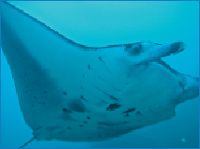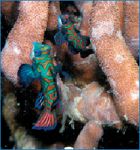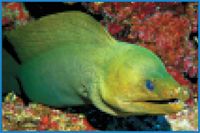Article
Diving in
Experience with optics gives ophthalmologist greater appreciation of cameras, photography

Dr. Isenberg grew up in southern California and swam a lot as a child.

"As soon as I was underwater, I became calm, relaxed, and fascinated," said Dr. Isenberg, who is also former editor-in-chief of the Journal of AAPOS (American Association for Pediatric Ophthalmology and Strabismus).

"Scuba diving is much safer than it's perceived to be," he said. "All divers are well-trained. You must complete classroom instruction, pass tests, and perform a number of dives under the supervision of an instructor.
"When you get a tank of air for a dive, you generally must present your certification card," Dr. Isenberg said. "So, there's a check point to ensure only certified divers are diving."
Getting the shot

"Weight restrictions on luggage since 9/11 have made it difficult to travel with that setup," Dr. Isenberg said.
"Another issue with using the 35-mm camera underwater is that you are restricted to 36 pictures," he said. "I had to 'ration' shots."
Dr. Isenberg made the conversion to digital photography.
"The cameras are much lighter, and you always look like a more accomplished photographer with digital photography," said Dr. Isenberg, acknowledging that he deletes bad shots immediately!
"When I first made the switch from film to digital, the shutter delay was a problem," he said. "There are always new challenges with new technology. A 5-second shutter delay can be a disaster when you are stalking a fish!"
Newer cameras have virtually no shutter delay, so that issue has been resolved, he added.
Delightful dives
Dr. Isenberg is able to take diving trips two or three times a year. His favorite places to dive include the Grand Cayman and Saba islands in the Caribbean, as well as the South Pacific island of Palau.




